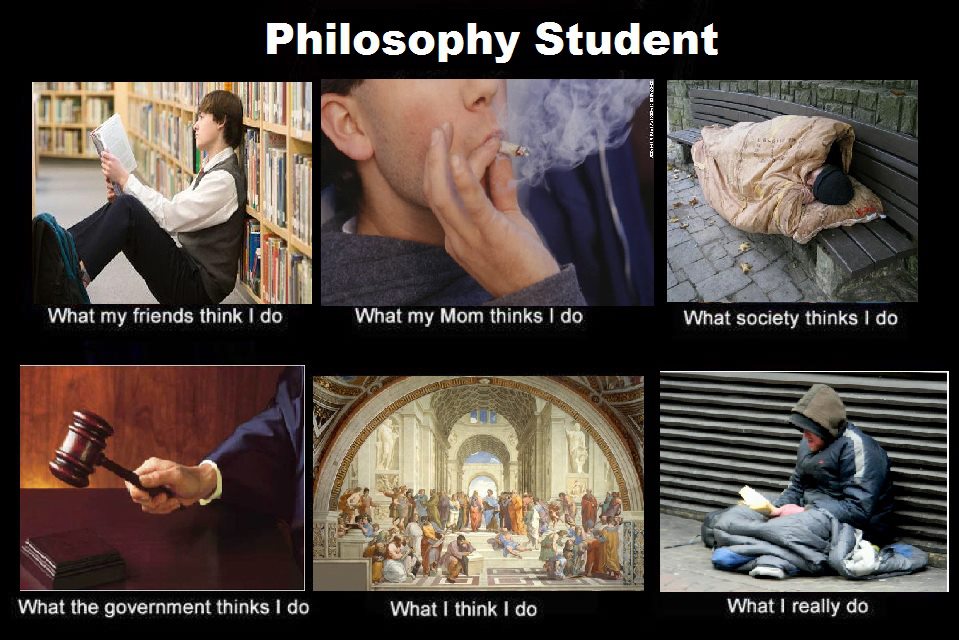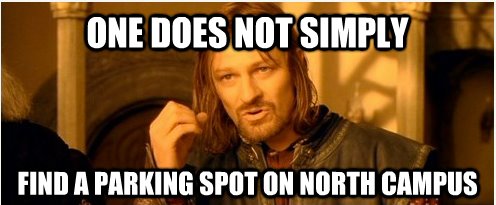You have /5 articles left.
Sign up for a free account or log in.
With roots in the evolutionary biology of Richard Dawkins, meme theory is something a student might expect to learn about while in class rather than killing time on Facebook.
But as higher education has suddenly turned into a hot zone for a certain strain of Web-borne gag, many students are watching meme theory unfold on their own campuses.
When Dawkins coined the term “meme” in 1976, he was writing about ideas that are passed from host to carrier in a similar manner to genes -- replicating, mutating and occasionally going extinct. In recent years, the term has come to refer to Internet memes -- ideas that spread through populations via the Web. They can present as videos, Twitter hash tags, and cat photos with misspelled captions.
About two weeks ago, there was an outbreak among college students. And as with all student-led communication trends, the recent meme craze has left onlookers to figure out how they should react. Some entrepreneurs have attempted to opportunistically fan the flames, while university officials have largely kept their distance.
Many students have replicated the popular “Shit Girls Say” meme in reference to their own campus (e.g. “Shit USC Girls Say,” “Sh*t Wesleyan Students Say,” “Shit uOttawa Says!”). Others have posted variations on another meme where a student or professor -- of philosophy, of law, of women’s studies -- juxtaposes the warped perceptions of her discipline from various perspectives, including her own, with the mundane reality.
But the meme that has gained the most traction of late is the simplest: plain white text superimposed on a portrait of some recognizable character. Some of the characters are famous in their own right, such as Willy Wonka, Boromir from Lord of the Rings, and The Most Interesting Man in the World from the popular Dos Equis ad campaign. Others owe their celebrity to meme culture itself, such as “Uber Frosh,” “Senior Freshman,” and “Lazy College Senior.”
Aside from these types, the propagators of this meme send up rival schools, university administrators, Greek life, local eateries, sanctimonious classmates, absent-minded professors and countless other targets. Other examples simply reference campus landmarks, personalities and phenomena -- to the apparent delight of those who recognize them.
The jokes read north to south across the image, with a set-up line at the top and a punch line at the bottom. Meanwhile, the image itself supplements the joke by either establishing the subject of the joke (the naïve first-year, the elderly course auditor, the coasting senior) or reinforcing the attitude with which the joke is being delivered (Wonka’s irony, Boromir’s pedantry, Most Interesting Man’s mystique).
An image of a bright-eyed college freshman: “Gets Drunk at a Party / Talks about it for a week.” An image of an elderly senior raising her hand in the class she's auditing: “Corrects history professor / Remembers being there.” An image of a jaded college senior: “Job hunting is too hard / Grad school it is.”
The humor may be hit or miss, but its appeal among college students has been undeniable. The meme has been replicated on an untold number of college campuses in the United States and Canada, with students “liking” campus-specific Facebook pages in droves and contributing their own variations via QuickMeme.com and MemeGenerator.net, where amateurs can easily build their own gags from templates. Many campus pages have accumulated thousands of fans and dozens of contributions in only a week or two.
The explosion in content has been driven largely by inspired students. But the campus-themed Facebook pages themselves did not proliferate purely by contagion. Dozens of them were planted, over the course of several days, by a small group of entrepreneurs led by Saif Altimimi, a 21-year-old University of Geulph dropout who runs an education technology company called NoteWagon, an online marketplace where students can buy and sell class notes. His plan is to develop a separate website, CampusMemes.com, that would sell advertising space on each campus-themed page to businesses that cater to the students there. (This paragraph has been updated since publication.)
Altimimi created his first Facebook meme page, for the University of Waterloo, in late January. It was an instant hit. “Within the first few hours, I got half the students [there] on the meme page,” Altimimi says. So he created similar pages for other Canadian universities, including the University of British Columbia, Simon Fraser University and Dalhousie University. Then he began working his way into the United States, creating pages at the University of Michigan, Michigan State University, Wayne State University, Oakland University and others. (Waterloo is roughly 180 miles from Detroit.) When those caught on, he started grabbing big-name institutions such as Harvard, Stanford and the Massachusetts Institute of Technology.
By then, copycat pages had begun cropping up and Altimimi realized he had to move fast. “I made sure I grabbed every major school in the U.S.,” he says. He says he created about 65 pages in all. Two days into the project, Altimimi says his Facebook pages got nearly 2 million unique visitors in total. The next phase, he says, is to try to funnel those visitors on to CampusMemes.com, where Altimimi and his partners can exercise more control over design, security and advertising.
“It’s a really, really valuable advertising property,” he says. “With stuff like this we can target a specific university, so it adds a lot of value for local merchants to target students specifically on certain campuses.”
Not all the campus-specific meme pages are “owned” by Altimimi and his cohort. Nathan Turner and Ryan Cottrell, two first-year students at Brigham Young University, started what is arguably the least irreverent page (Most Interesting Man: “I don’t always get a tattoo / But when I do, it says holiness to the Lord”). Taylor Roden and Ryan Chew started the meme page for Santa Clara University (Most Interesting Man: “I don’t always talk to [San Jose State University] grads / but when I do, I ask for large fries.”) In addition to contributing to existing pages, students appear to be replicating meme pages themselves outside of Altimimi’s colonization efforts. (Altimimi has bought at least one “property” -- the Arizona State meme page -- from someone who beat him to the punch; he would not say how much he paid.)
So far there is scant evidence of pushback from campus communications officials. Stanford University asked a student to remove the university’s name from one of several Facebook meme pages there for purposes of brand protection, and Altimimi says officials at Simon Fraser and Toronto asked him to remove their logo from the page, which he did, but reports no stern notes from attorneys at any other institution.
"The memes are funny and should be allowed their five minutes of viral fame,” says Deepa Arora, the communications director at Santa Clara. “… If they get out of control and hurtful, I am confident the Santa Clara student community on Facebook will step up and pull them down."
“The issue of whether they should consider them a liability or a boon is a moot point. It’s happening. It’s wildly popular,” says Elizabeth Scarborough, the CEO of the higher education marketing firm SimpsonScarborough.
But Scarborough also cautions university officials against trying to “get on the bandwagon and embrace memes,” as they have with other student-generated communications trends. “Memes generally have a negative and snarky tone,” She says. "Tone is of critical importance in marketing. Most colleges are not trying to communicate ‘snarky’ so choosing a meme to send a key message is not going to fit with most college and university marketing strategies.”
For the latest technology news and opinion from Inside Higher Ed, follow @IHEtech on Twitter.








